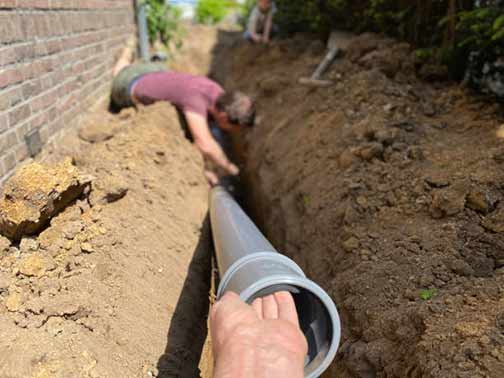
There are some home repairs that no homeowner ever wants to do in their home. That is because these projects are costly, time-consuming, and highly disruptive. Furthermore, there is no alternative way to tackle them; if the repair becomes necessary, do it.
An example of one such project is a sewer line replacement, says J. Butler Property Management. If the sewer line in your home becomes damaged to the point where you have to replace it, there is no way to get away from that expense. Delaying to do it will achieve only one thing: make the work costlier in the long run.
That is why when planning to replace your sewer line, you want to be sure that a sewer line replacement (and not sewer line repair) is what you need. Secondly, you want to be sure that the job is done correctly, with no risk of complications in the future.
What you should know before commissioning a sewer line replacement for your home? In this post, we explain how to verify that the problems in your sewer line are enough to justify a sewer line replacement and how to ensure that the work is done right.
Investigate with a sewer camera
Should you repair or replace the sewer line? Sewer line repair is favored by many homeowners because it is cheaper. But you don’t want to repair a sewer line when you should be replacing it or vice versa. Both scenarios will only result in wasted effort and money.
To determine the right option, you should have the line checked by a reputable sewer line repair expert. That involves a sewer scope inspection (sewer camera inspection), which provides real-time, up-close information about the condition and integrity of your sewer line.
Based on the inspection report and the plumber’s advice, you can decide if replacing the line is appropriate. Most honest plumbers typically want to try sewer line repair first, but this only makes sense in certain circumstances. When should you repair or replace your sewer line?
Repair the sewer line if;
- It is relatively new (less than 50 years old), and the damage is not extensive.
- The line has holes or cracks, but the damage is not severe (misaligned, collapsed, or bellied).
- The line (or that section of the sewer line) has never been repaired.
Replace the sewer line if;
- It is more than 50 years old.
- It is less than 50 years old but made of iron, clay, or other vulnerable material.
- The line is collapsed, bellied, misaligned, or has a severe case of tree root intrusion.
- There is severe and extensive corrosion in the pipes.
- The line has been repaired in the past, but the issues have returned.
What to know when replacing a sewer line
The following information will save you time and money when replacing your sewer line. It will also help you avoid mistakes you may have to pay for throughout the line’s lifespan.
- Choose the appropriate replacement method
The two main methods to choose from when replacing a sewer line are Trenchless technology and Traditional methods. Trenchless technologies, as the name implies, do not involve a lot of digging (excavation). Because they are minimally invasive, they are faster, and the cost of fixing your sewer line and damaging landscaping is lower.
However, although the traditional sewer replacement method is more invasive, labor-intensive, and disruptive, it does have its advantages. There are situations where only this method will work, such as when the sewer line is under a large concrete surface. Additionally, the traditional method is more thorough and guarantees the best long-term results.
- Select the proper pipe material
The right sewer line material for your home depends on a combination of cost, local soil conditions, how easy or difficult the pipes are to install, how long you expect the pipes to last, and what the local regulations say.
If you want lightweight and easy-to-installs, you may use ABS pipes. On the other hand, HDPE pipes last longer because they are resistant to corrosion. Remember that the replacement method you choose can also influence the pipe material.
- Choose a licensed and experienced plumbers
Installing a sewer line is not as simple as laying the pipes in the ground and covering them up. How a sewer line is laid can predispose it to failure (clogs, bellies, or collapse). The quality of installation can also affect the drainage around your home.
If the trench is not properly backfilled and compacted, it can result in soil erosion and other issues on your property. Finish the installation by having the installed sewer line inspected again to be sure the job was done right. That should not be done by the installer.
To conclude, it is clear from the above that when replacing your sewer line, the quality of your result rests heavily on the installer you use. Working with a plumber who has vast experience with a wide range of sewer line problems is essential.


